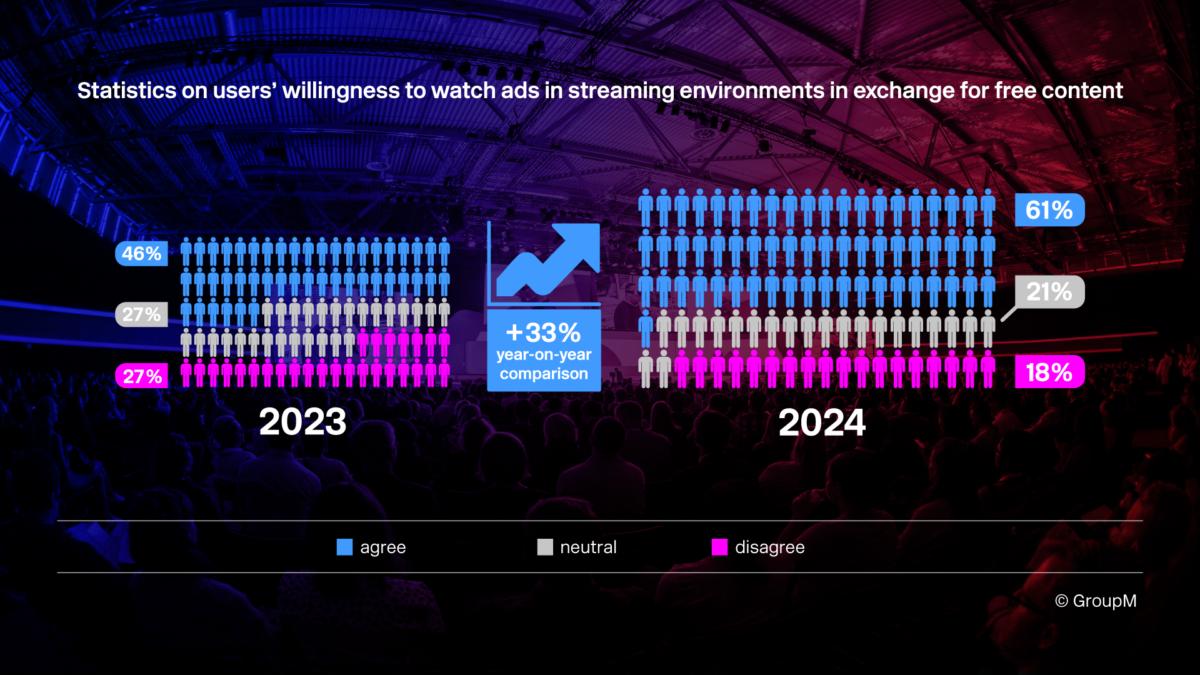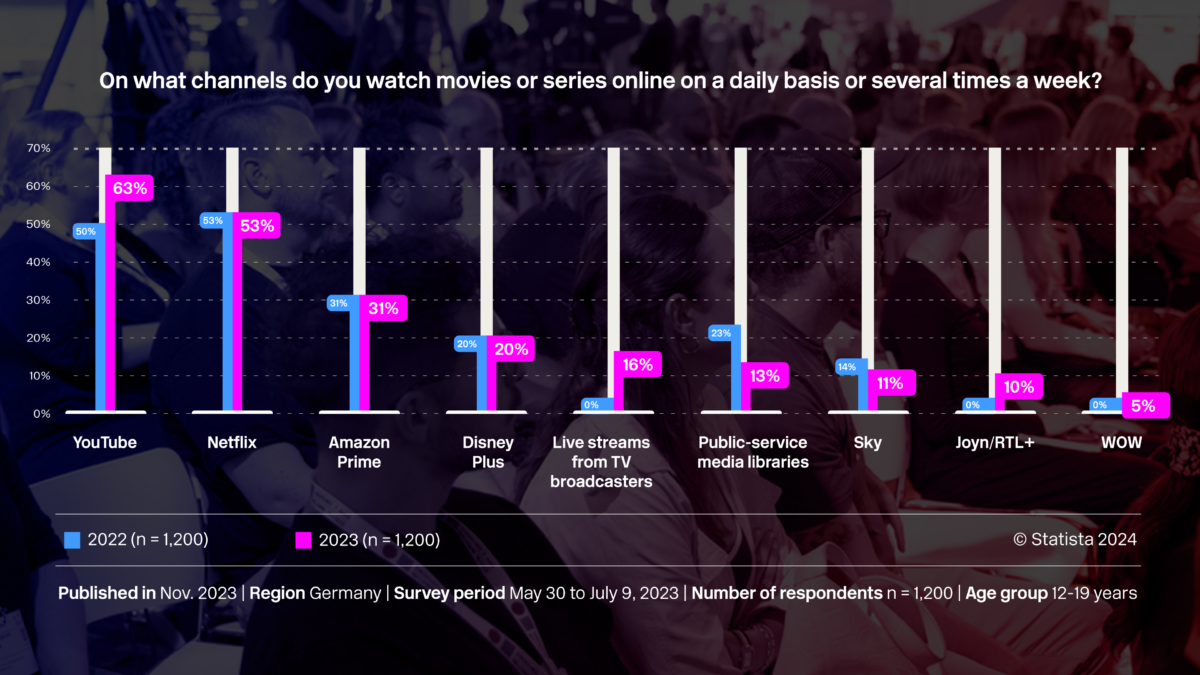The future of TV: El Dorado for marketers
Imagine a situation where your ads reach precisely the people you’re targeting. Streaming services make it possible! Let’s look into the future of TV.

Tell me what you watch and I’ll tell you who you are
Ever wondered who’s privy to our personal tastes and secret guilty pleasures and knows exactly what favorite series we chat about with our colleagues on Mondays? The answer is streaming services such as Netflix, Prime Video, and Disney+. They possess an abundance of valuable information about their users, giving them enormous power over advertisers, who are now especially reliant on first-party data due to the imminent end of third-party cookies.
Status quo of TV advertising
If we rewind a bit, it’s clear that traditional TV advertising has had it hard for some time now. Right before our eyes, streaming services have increasingly thrived in recent years with their ad-free subscription models, enticing countless users away from linear, ad-funded TV.
A representative study conducted by GroupM and Samsung Ads titled “Revolution in the Living Room: Smart TV Usage 2024 in Germany” looked at how popular free streaming services are and how open users are to advertising. The results, published in May 2024, revealed that this new setting is an EL Dorado for marketers.
We’re seeing a revival of ad breaks in moving image content on people’s screens. The background: all major streaming services are now offering ad-funded subscription models at reduced prices – and users are extremely willing to accept ads in exchange for free content.

At first glance, this looks like we’re simply returning to old ways, but it’s not as straightforward as that. That’s because it doesn’t take into account how today’s advertising landscape is structured and the pool of data that marketers can and must tap into in order to stay relevant and gain a competitive advantage.
In the following, we delve into four phenomena:
- High targeting standards for streaming services and advertisers
- Data coalitions between streaming services and retail media providers
- Identification of target groups using artificial intelligence
- Google’s “Display & Video 360” platform
#1 Data, data, and more data
Streaming providers possess a wealth of data about their users and are therefore extremely valuable to marketers. However, the relationship isn’t one-sided: to stay profitable, streaming services are just as dependent on advertisers.
Marketers: Did you know that you can benefit from account sharing bans?
We all know of course that it’s mainly the streaming services that are benefiting from such bans. The example of Netflix has shown that account singularity can lead to significantly more subscribers and thus more revenue – a tempting prospect that has encouraged Disney+ to follow suit with a similar plan.
However, advertisers can also benefit because, going forward, a person’s data can be clearly attributed to a specific account. This opens up a real treasure trove of cleaned first-party data.
#2 Transformation toward multi-channel?
What’s better than lots of data? You guessed it: more data! To make targeting even more precise, streaming services and retail media providers have formed data coalitions. In the U.S. – which is leading the way on the international market in terms of connected TV (CTV), advanced TV (ATV), and similar segments – another successful model is emerging: Disney+ is collaborating with Walmart to integrate the retail giant’s retail media data into its streaming platform for the purpose of programmatic advertising. With this strategy, the streaming company is using external data to even further refine its targeting and become more attractive to advertisers.
#3 AI-powered TV: it’s only logical
When it comes to incorporating artificial intelligence, the innovative moving image providers from the U.S. are again the industry’s avant-garde. For example, the media company NBCUniversal is leveraging AI to build detailed marketing personas. It recently announced that it had used AI to analyze the viewing habits of its users, resulting in the creation of 324 new viewer segments and the identification of personas such as “Gen Z action and drama seekers” and “Dramedy streaming seniors”. On the basis of this segmentation, it is now possible to make more accurate predictions about what kind of advertising content is suitable for the target group.
#4 Let’s not forget YouTube
Meanwhile, Google is taking extra steps to expand advertising in the CTV segment. That’s hardly surprising, considering that the company owns YouTube, one of the most important moving image channels on the market. With its “Display & Video 360” platform, Google now lets advertisers place video ads on CTV and YouTube.

Future TV at DMEXCO 2024
Experience the future of TV live and in color: on September 18 and 19, the cameras will be rolling for “take one”. DMEXCO 2024’s official partner Screenforce Germany will be sitting in the director’s chair and exploring the topics of ATV, CTV, advertising impact, and sustainability on the Future TV stage. You can look forward to answers to questions including: What does the future hold for TV in Germany? What content strategies are media companies implementing? After all, the German TV and streaming market may be lagging slightly behind the U.S. market, but it is still evolving at speed.
Spoiler alert: the future of TV is now
So, are you a Gen Z action and drama seeker or a dramedy streaming senior? Whatever describes you best, one thing is clear: a new season is starting in TV advertising, all thanks to the integration of new technical developments such as AI, new collaborations, and the dialogue promoted by networks like Screenforce. Let’s shape the future of TV together!






